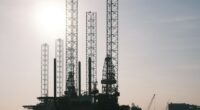The main difference between the two is that a fault divorce requires someone to be held responsible for causing the end of the marriage, while a no-fault divorce allows couples to legally separate without assigning blame. Ultimately, it is up to you as an individual or couple to decide which option best suits your situation.
What is a divorce?
(Photo by Karolina Grabowska)

Divorce is a legal process that ends a marriage or a marital union between two people. It involves the dissolution of the legal responsibilities and duties of marriage, including the division of property and debts, child custody and support, and spousal support or alimony. Divorce can be initiated by one or both parties and typically requires a court process to finalize the dissolution of the marriage.
What is a no fault divorce?
(Image by Donate PayPal Me from Pixabay )

A no fault divorce is a divorce in which neither party assigns blame to the other for the breakdown of the marriage. In a no fault divorce, both parties agree to end the marriage without assigning blame or fault. No fault divorces are usually quicker and easier than fault-based divorces because they do not require evidence or testimony to prove that one spouse is at fault.
Fault Vs. No fault divorce – Key differences
The key differences between fault and no-fault divorce are as follows:
Grounds for divorce: In a fault divorce, one spouse must prove that the other spouse is at fault for the breakdown of the marriage, such as adultery, abandonment, or cruelty. In a no-fault divorce, neither spouse needs to prove fault or wrongdoing. Instead, the grounds for divorce are typically based on irreconcilable differences or an irretrievable breakdown of the marriage.
Legal process: In a fault divorce, the process is typically more adversarial, as one spouse is accusing the other of misconduct. This can lead to a more contentious legal process, with both sides fighting to prove their case. In a no-fault divorce, the legal process is typically less contentious, as neither spouse needs to prove fault.
Division of property and assets: In a fault divorce, the court may consider the fault of one spouse when dividing property and assets. For example, if one spouse committed adultery, the court may award a larger share of the assets to the innocent spouse. In a no-fault divorce, fault is not considered when dividing property and assets.
Spousal support: In a fault divorce, fault may be considered when determining spousal support or alimony. For example, if one spouse committed adultery, the court may award less spousal support to that spouse. In a no-fault divorce, fault is typically not considered when determining spousal support.
The main difference between fault and no-fault divorce is the need to prove fault or wrongdoing. Fault divorces can be more contentious and lead to a longer legal process, while no-fault divorces are typically less adversarial and can be resolved more quickly.
What are the grounds for a fault divorce?
There are many grounds for fault divorce, but the most common are adultery, abandonment, prison sentence, and abuse. To get a fault divorce, you must be able to prove to the court that your spouse is at fault. If you cannot prove that your spouse is at fault, you may still be able to get a no-fault divorce.
How to decide which type of divorce is right for you
A fault divorce occurs when one spouse blames the other for the failure of the marriage. In a no-fault divorce, neither spouse is held responsible for the breakup of the marriage.
If you are considering a fault divorce, you will need to decide if you are willing to forgive your spouse for their role in the demise of your marriage. If you are not willing to forgive your spouse, then a fault divorce may be the right choice for you. However, if you are willing to forgive your spouse and move on, then a no-fault divorce may be the best option.
Another factor to consider when deciding between a fault and no-fault divorce is whether or not you want to air your dirty laundry in court. If you choose a fault divorce, everything will be laid out in court for everyone to see. However, if you choose a no-fault divorce, much of the process can be done behind closed doors.
Ultimately, the decision of which type of divorce is right for you depends on your individual circumstances. If you are able to forgive your spouse and move on from the failed marriage, then a no-fault divorce may be best. However, if you are not ready to forgive or move on, then a fault divorce may be right for you.
What are the benefits and drawbacks of a no fault divorce?
There are several benefits and drawbacks to a no-fault divorce, as follows:
Benefits:
- Simplifies the process: A no-fault divorce can simplify the divorce process by eliminating the need to prove wrongdoing or fault, which can save time and money for both parties.
- Reduces conflict: By removing the need to assign blame, a no-fault divorce can reduce conflict between the parties, making it easier to negotiate the terms of the divorce, especially in cases
- where the relationship has broken down irretrievably.
- Protects privacy: With a no-fault divorce, sensitive personal information does not need to be revealed in court, which can protect the privacy of both parties.
- Allows for a more amicable split: In some cases, a no-fault divorce can lead to a more amicable split, as it removes the emotional burden of having to prove wrongdoing.
Drawbacks:
- Can be unfair: In a no-fault divorce, the party who is less financially secure or who has less power in the relationship may be at a disadvantage, especially in cases where one spouse is primarily responsible for the breakdown of the marriage.
- May lead to a lack of accountability: Without the need to assign blame, there may be a lack of accountability for the actions that led to the divorce, which can be frustrating for the injured party.
- Can be seen as promoting divorce: Critics of no-fault divorce argue that it promotes divorce by making it easier to end a marriage without the need for a specific reason, which can undermine the institution of marriage.
- May lead to a loss of social support: Without the need to prove fault, friends and family may be less likely to offer emotional support to one party over the other, which can lead to a sense of isolation for some individuals.
What are the top five causes of divorce?
The top five causes of divorce vary depending on the source and methodology of the research, but some common factors include:
Infidelity or extramarital affairs: Cheating is a leading cause of divorce, as it can erode trust and emotional intimacy in a marriage.
Communication problems: Poor communication, including a lack of openness, honesty, and effective conflict resolution skills, can lead to misunderstandings and resentment, ultimately leading to divorce.
Financial issues: Disagreements over money and financial priorities, including debt, overspending, and unequal income levels, can put significant strain on a marriage.
Domestic violence or abuse: Physical, emotional, or sexual abuse is a serious problem that can lead to divorce, as it puts the victim’s safety and well-being at risk.
Incompatibility or growing apart: Over time, couples may find that they have grown apart and no longer share common goals, interests, or values, leading to feelings of disconnection and ultimately divorce.
Featured Image By – Photo by RODNAE Productions








